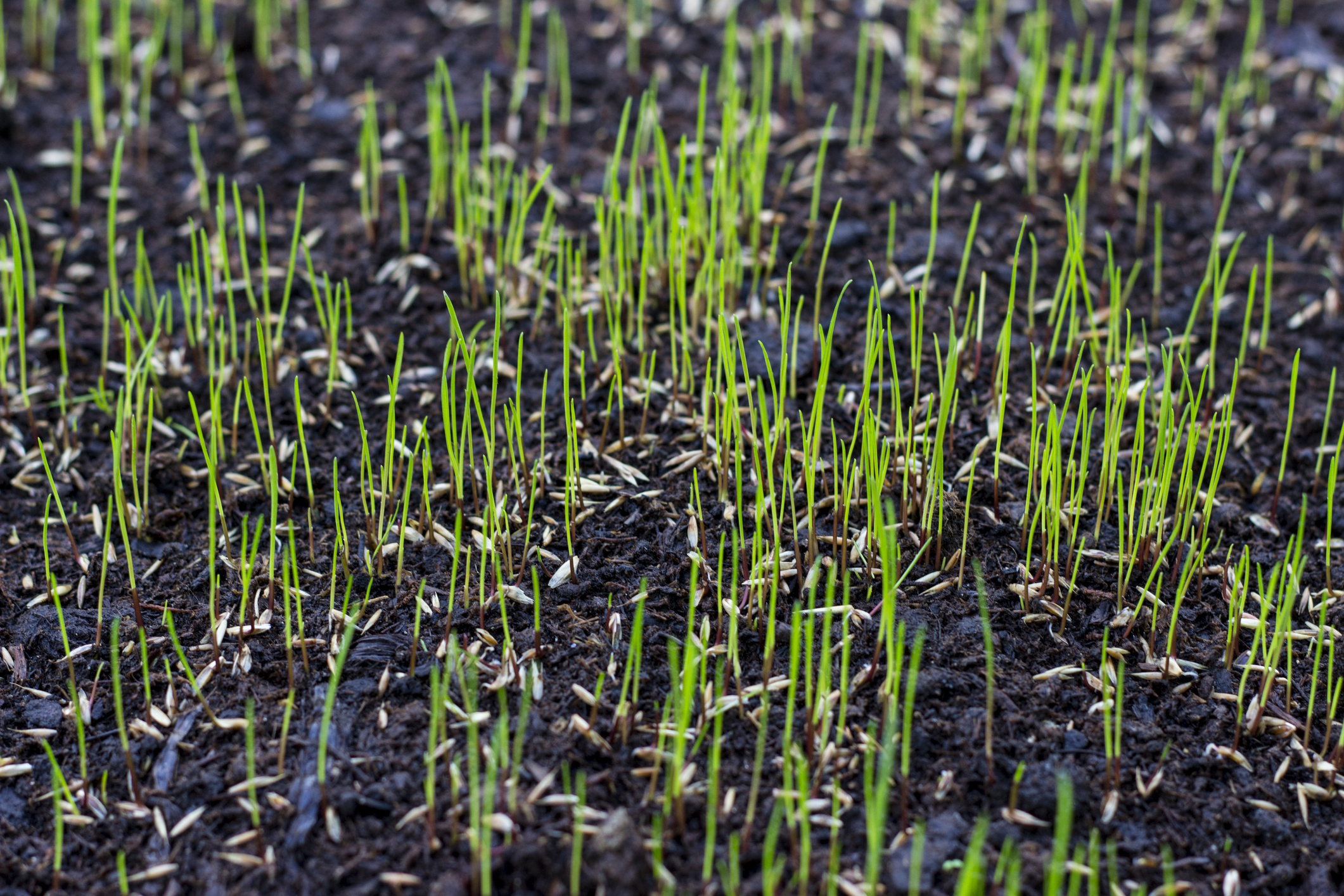Overseeding a lawn in 7 easy steps
Posted by Lisa Taylor on 22nd Jun 2023
Overseeding is the process of planting grass seed over an existing lawn. There are several reasons why people choose to overseed their lawns:
Enhancing lawn density
Over time, lawns can develop thin patches or bare spots due to factors like foot traffic and environmental conditions. Overseeding helps to thicken the lawn by introducing new grass seed, filling in these thin or bare areas and improving overall density.
Repairing damaged areas and lawn rejuvenation
Lawns may suffer damage from activities such as construction work, pet damage, or lawn care equipment. Overseeding promotes the regrowth of grass and restores the uniform appearance of your lawn. The new growth will improve your lawns overall health and give it a lush, new vibrant look.
Introducing improved grass cultivars and new seed type
This is more of a specialised reason, perhaps more suited to groundsmen and estates. Grass varieties continually undergo research and development, resulting in improved cultivars that offer better resistance to diseases, pests, drought, or other stresses. Overseeding with these improved grass seed varieties can help upgrade the overall quality and performance of the grass.
How to overseed
You need the following materials to before you start your overseeding project:
- Grass Seed
- Soil
- Rake
- Garden Hose
- Fertiliser (optional)
Step 1: Prepare the lawn
- Mow your existing lawn to a height of around 1.5 to 2 inches. This helps expose the soil for better seed-to-soil contact.
- Remove any debris, such as rocks, sticks, or dead grass, from the lawn.
Step 2: Prepare the soil
- If you have any bare spots, loosen the soil in those areas with a rake or garden tiller.
- If the soil lacks organic matter, you should spread a thin layer of topsoil or compost over the soil and grass. This will help improve the soil structure and provide a better environment for the new grass seed.
Step 3: Spread the grass seed
- Using a spreader or your hand, evenly distribute the grass seed over the entire lawn. Aim for a rate of about 15 – 25g per m2. You can adjust the amount based on the specific recommendations for your chosen grass seed variety.
Step 4: Rake the seed into the soil
- Lightly and evenly rake the grass seed into the top ¼ inch of soil. This improves the seed-to-soil contact and helps prevent the seeds from washing away or drying out.
- Avoid raking too aggressively, as this can disturb the existing grass and cause damage.

Step 5: Water the lawn
- Water the newly overseeded lawn immediately after seeding. Use a gentle spray or a sprinkler to moisten the soil thoroughly but avoid overwatering, which can wash away the seeds.
- Keep the soil consistently moist by lightly watering the lawn several times a day, if necessary, to prevent drying out. This may require watering more frequently in hot or dry weather.
Step 6: Maintain the lawn
- Continue to water the lawn regularly until the new grass has established, which typically takes about 2 to 3 weeks.
- Once the grass reaches a height of around 3 inches, you can gradually reduce the frequency of watering.
- Avoid mowing the newly germinated grass until it reaches a height of 3 to 4 inches. When you do mow, set the blade to the highest recommended setting, and gradually lower it over time.
Step 7: Apply fertiliser (optional)
- After the new grass has established and been mowed a few times, you can consider applying a slow-release lawn fertiliser according to the instructions on the product packaging. This will help promote healthy growth and strengthen the lawn.
By following these steps, you should be able to successfully overseed your lawn and encourage a thicker, greener turf.

